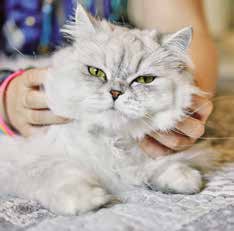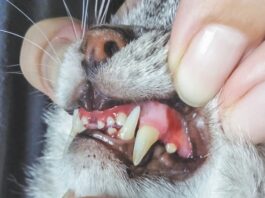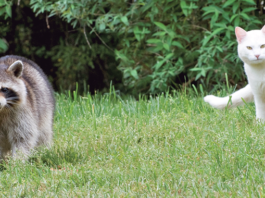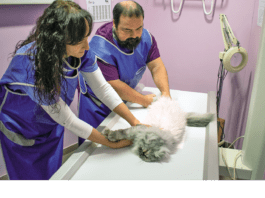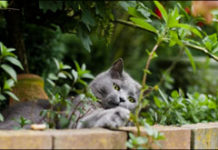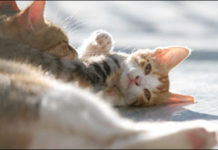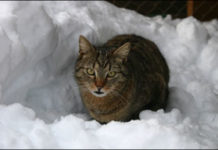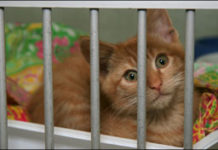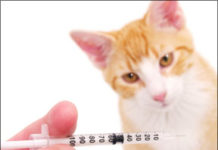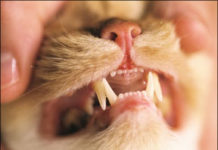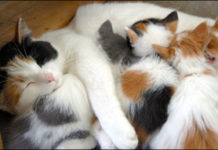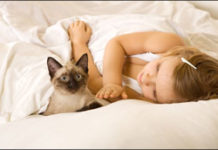Ask Elizabeth: March 2010
Sometimes, I find things which appear to be grains of rice stuck to the fur around my cats hind end. Figaro does go outside, but I cant figure out how he could get rice stuck back there. Do you think hes been rooting around in garbage cans looking for food?
Diagnosis: Feline Lymphoma
The feline lymphatic system an exquisitely structured arrangement of internal organs and tissues directly or indirectly influences every aspect of a cats physical existence. For this reason, owners should be equipped to recognize the signs that suggest the presence of feline lymphoma, a potentially deadly cancer of the lymphatic system that can assault many areas of a cats body, including its liver, gastrointestinal system, spleen and skin.
Herpesvirus: A Big Threat to Pets
Many cats, at some point in their lives, will contract an upper respiratory disease characterized by persistent sneezing, nasal discharge, conjunctivitis (inflammation of the mucous membrane lining the inner surface of the eyelid), and in some cases keratitis (inflammation of the transparent outer covering of the front of the eyeball). Although a wide range of viral and bacterial agents may be responsible for this disorder, one of the most common - perhaps the most common - cause is infection with feline herpesvirus (FHV).
Ask Elizabeth: 12/09
Rabies is in the family of RNA viruses (Rhabdoviridae) and the genus, Lyssavirus. Rabies exists nearly everywhere although some areas (including New Zealand; parts of the Caribbean, Scandinavia, and British Isles; Japan; and Hawaii) are thought to be free of the virus.
The Real Danger of Hypothermia
Cats whose breed developed in frigid areas of the world are likely to tolerate cold weather better than cats whose origins can be traced to more temperate regions. But even the fattest, furriest Maine coon will have only a slight edge over a trim, thin-coated Siamese when it comes to prolonged exposure to the biting winds, ice, snow and sleet that come with winter. Indeed, any cat that is left outside for extended periods of time when the temperature is below freezing - not to mention any poor creature that happens to tumble into an ice-cold pond - will be at risk for a potentially deadly drop in body temperature. The chances that this condition - called hypothermia - will prove fatal depends largely upon the animals age, overall physical condition and ability to regulate its body temperature, says Dr. Gretchen Schoeffler, chief of emergency and critical care services at the Cornell University Hospital for Animals.
Short Takes: January 2010
A common disease in cats, upper respiratory tract disease (URTD) can spread quickly among cats residing in animal shelters. These infections cause discomfort in the animals, consume vital personnel and financial resources and limit adoptions. In a large urban shelter in the northeast United States, 531 kittens, 701 litters and 2,203 adult cats were observed during their stays on a daily basis over a period of 50 weeks for signs of URTD ("Descriptive epidemiology of feline upper respiratory tract disease in an animal shelter" in the Journal of Feline Medicine and Surgery, 2009).
FeLV and FIV Testing: Important
Among all causes of lethal feline disease, none should be taken more seriously by cat owners than those caused by two specific submicroscopic organisms: feline leukemia virus (FeLV) and feline immunodeficiency virus (FIV). Although these viruses are somewhat different in appearance and in the manner in which they exact their toll on feline health, infection with either one of them, if undetected, is capable of causing a cats premature death. All Too Common. To make matters worse, FeLV and FIV infections are by no means rare. Recent estimates indicate that two percent to four percent of the 83 million or so cats in the U.S. harbor one or both of these two viruses.
Diagnosis: Feline Anemia
Veterinarians generally recommend that all cats undergo a thorough physical examination at least once a year until they have reached seven or eight years of age, and twice annually thereafter as they progress into their senior years. The exam should include a complete blood count (CBC), a procedure that can reveal or at least suggest the presence of many feline health disorders. The importance of the CBC should not be underestimated. Among other things, a CBC will determine the concentration of red blood cells (erythrocytes) in a drop or two of blood. The procedure will also reveal the density of hemoglobin, an important constituent of each erythrocyte.
Feline Upper Respiratory Infections
Your seven-year-old cat is a generally healthy animal. Except for a fleeting bout of gastrointestinal upset a few years ago, shes never had a really serious sick-day in her life. But your neighbors cat always seems to be ill. Every couple of months, she shows up on your doorstep wheezing and sneezing. Her eyes are red and watery, and she acts lethargic. These disturbing signs persist for a week or so, but then she seems to be okay again for a while. Its quite likely that the cat next door is suffering from an upper respiratory infection, a highly contagious disease affecting her nose, sinuses, pharynx and larynx the structures that filter, heat and dehumidify inhaled air before it flows to her lungs. Why is it, you wonder, that your cat never experiences this problem, while the cat next door cant shake it?
Indoor Allergies and Your Cat
Though outdoor allergens (substances that can cause the immune system to respond with an allergic reaction), such as pollen, are considered to be the main culprits in causing allergies, indoor allergens, such as the common house dust mite, actually have the potential to be much more reactive. As humans, we generally have the most difficult time with indoor allergens when they are airborne and are inhaled into our upper respiratory tract. Though we consider our feline pets to be members of the family, most cats do not respond to airborne particles with an allergic reaction in the respiratory tract - unless the cat is asthmatic, notes William H. Miller, VMD, professor of medicine, chief of the section of dermatology, and medical director of Cornells Companion Animal Hospital.
Chronic Respiratory Disease in Cats
Chronic rhinosinusitis (CRS) is a common disease in cats with an unclear cause. A number of studies have indicated that most cases of upper respiratory disease in the cat are complicated by secondary bacterial infections. Antibiotic therapy is frequently employed to treat feline CRS. A study published in the Journal of Feline Medicine & Surgery evaluated the effect of sampling method on culture results in 44 cats.
Critical Care for Your Cat
A virtually comatose cat was rushed by its distraught owners into the emergency unit of the Cornell University Hospital for Animals (CUHA). The animal, a neutered two-year-old male, hadnt eaten a bite of food or consumed a drop of water for the previous 24 hours. The night prior to his arrival at the hospital, the cat had spent nearly an hour straining in his litter box, apparently in considerable pain, but had neither urinated nor defecated. When his owners awoke the following morning to find the poor animal vomiting intermittently, they finally agreed that emergency care might be warranted. Lucky for them, not to mention the ailing cat, they moved into action. By the time they reached the hospital, the cat was breathing with great effort and lying motionless on his side. A team of veterinarians and licensed veterinary technicians immediately noticed that the animals bladder was grossly swollen. Clearly, it had a blockage in its lower urinary tract that prevented the passage of urine. The team went speedily to work, feeding fluids into the animal intravenously while relieving the obstruction in its urethra.

